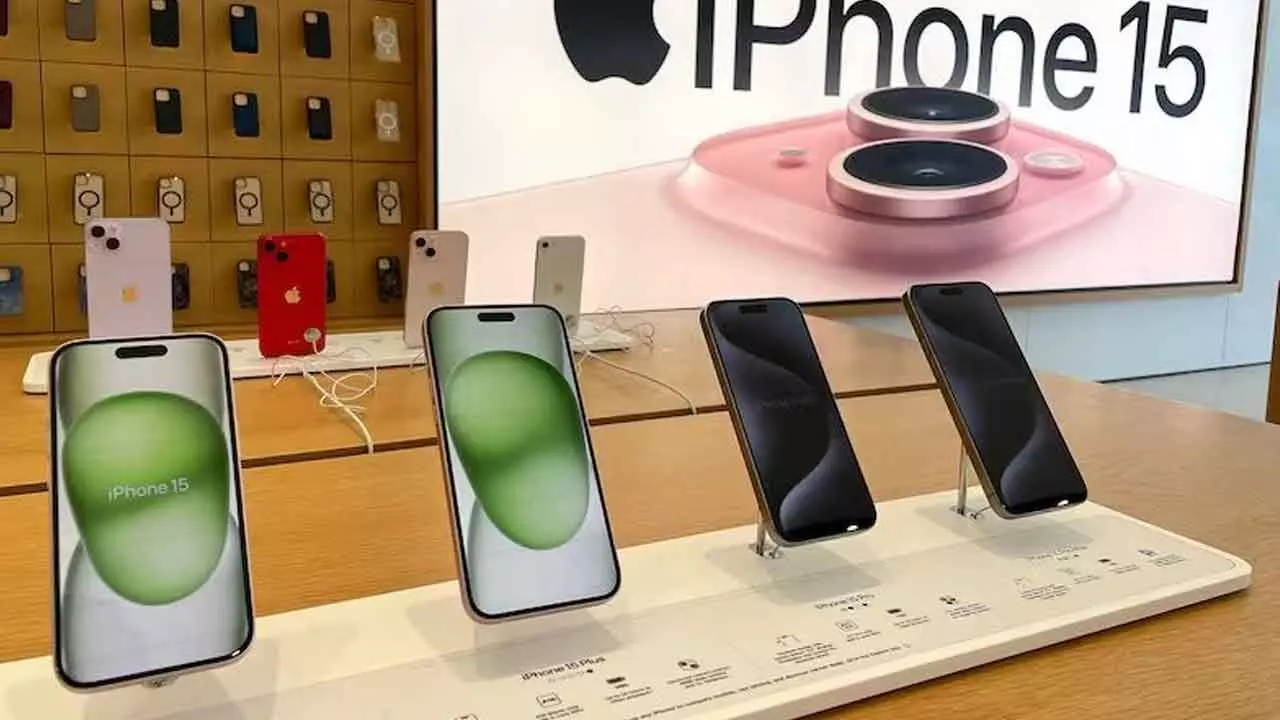Domestic Smartphones Market Looking Up As Global Giants’ Line Up To Make Iphones In India
The country now produces 97 per cent of its total mobile phone demand locally
Domestic Smartphones Market Looking Up As Global Giants’ Line Up To Make Iphones In India

India’s smartphone market was valued at $44.15 billion in 2023 and is expected to reach $88.99 billion by 2032, at a CAGR of 8.1 per cent during the forecast period 2023 – 2032
The Indian smartphone market grew for the fifth consecutive quarter in Q3 2024, according to the International Data Corporation's (IDC) Worldwide Quarterly Mobile Phone Tracker.
The smartphone shipments reached 46 million units in Q3, reflecting 5.6 per cent growth YoY (year-over-year), while the country’s smartphone market grew 7.2 per cent, reaching 69 million in H1 2024.
India now produces 97 per cent of its total mobile phone demand locally and 30 per cent of the total production in the financial year 2024 is meant for export, it said.
Smartphone ASPs (average selling price) grew by 2.8 per cent YoY; however, they declined QoQ by 5.6 per cent, at $248.
The entry-level (sub-$100) segment witnessed a strong decline of 36 per cent YoY to 14 per cent share, down from 22 per cent a year ago. Xiaomi continued to lead this space, followed by Poco and realme.
Shipments to the mass budget ($100<$200) segment grew by eight per cent YoY, with a marginal increase in share to 44 per cent from 42 per cent. The top three brands were Xiaomi, realme and vivo, making up 60 per cent of this segment.
The share of entry-premium ($200<$400) segment reached 30 per cent, up from 22 per cent and registered highest growth of 42 per cent YoY. OPPO, vivo and Samsung gained a significant share compared to the previous quarter, making up almost 60 per cent of this segment.
The mid-premium segment ($400<$600) segment declined by 25 per cent in unit terms to a four per cent share, down from five per cent a year ago. The major gainer vivo led with a 25 per cent share, followed by OnePlus and OPPO.
The premium segment ($600<$800) held two per cent share and declined by 37 per cent in unit terms. Key models were the iPhone 13, Galaxy S23FE, iPhone 12 and OnePlus12. Apple’s share increased YoY to 61 per cent, while Samsung’s share increased to 24 per cent, from 21 per cent a year ago.
The super-premium segment ($800+) momentum continued with 22 per cent growth and its share up from six to seven per cent. The iPhone15/15 Plus/14/14 Plus together accounted for 77 per cent of shipments, followed by the Galaxy S24/S24 Ultra with an 11 per cent share. Overall, Apple led the segment with a share of 83 per cent, followed by Samsung at 16 per cent.
Approximately, 27 million 5G smartphones were shipped in the quarter, the share of 5G smartphone shipments increased to 77 per cent, up from 49 per cent in 2Q23, while 5G smartphone ASPs declined by 22% YoY to $293. Within 5G, shipments of the mass budget ($100
Shipments to online channels grew by eight per cent YoY, and its share increased to 50 per cent in 2Q24 compared to 47 per cent in 2Q23. Motorola entered the top five vendor list in the online channel, at the fourth slot, while vivo climbed to the second slot, led by its T series models.
Meanwhile, due to intense heat wave conditions in most parts of the country, offline channel shipments declined by two per cent YoY in 2Q24.
Overall, vivo continued to lead for the second consecutive quarter, with multiple launches across price segments through the Y series, mid-premium V series and flagship X Fold 3 Pro. Motorola registered the highest growth backed by product portfolio across price segments.
India’s smartphone market was valued at $44.15 billion in 2023 and is expected to reach $88.99 billion by 2032, at a CAGR of 8.1 per cent during the forecast period 2023 – 2032.
Smartphones are mobile devices and cellular telephones with integrated computer technology. They combine the functionality of a traditional mobile phone with advanced computing capabilities. Moreover, they boast of several advanced features such as an operating system (OS), web browsing and the ability to run software applications. Smartphones are used by consumers and as part of a person’s business or work. India currently has 931 mn+ smartphone users and this number is expected to reach 1.1 bn plus by the next year.
The Indian smartphones industry is mainly driven by various factors like increasing disposable income, increasing youth population, growing internet penetration, and growing demand for advanced computing devices among the working population.
The economic growth in the country increasing the disposable income of people, with this growing disposable income the demand for smartphones is also increasing. To keep up with this increasing demand smartphone companies are expanding and developing their distributional channels across rural and urban India.
Many international players, including Apple, Samsung, Google Pixel, and Microsoft are introducing advanced smartphones and investing heavily in the Indian smartphone market.
For instance, according to Custom Market Insights Study, Apple and its suppliers have ambitious plans to manufacture over 50 million iPhones in India every year within the next two to three years.

